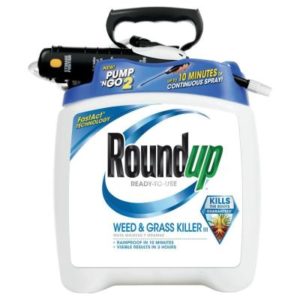 People don't realize the incredibly large amounts of pesticides applied to crops and soil in the US each year. Hundreds of millions of pounds! Which is the reason pesticides are found in our air, rain, water, soil, our foods, and in our bodies.
People don't realize the incredibly large amounts of pesticides applied to crops and soil in the US each year. Hundreds of millions of pounds! Which is the reason pesticides are found in our air, rain, water, soil, our foods, and in our bodies.
One of the pesticides that scientists are getting increasingly concerned with is the weed-killer glyphosate. It is the most used herbicide (weed-killer) in the world! It is found in Roundup, in non-organic crops, and even in genetically modified crops that are glyphosate resistant. Especially used on corn and soybeans, but also in a variety of crops (e.g., wheat, oats, cranberries, grapes, apples, beans).
The following story lays out the great amounts used in some states, especially in the midwest and southern states. Overall, an average of almost 130 pounds of glyphosate were sprayed per square mile in US counties each year.
But some counties had incredibly high amounts, such as Nueces County, Texas which has the highest use of glyphosate: more than 1,100 pounds sprayed per square mile. Iowa and Illinois (corn and soybean crops) accounted for 15% of national usage. The least was in northeastern (e.g., Massachusetts) and southwestern states (e.g., Nevada).
Evidence for health harms are increasing each year, such as an increased risk of cancer (e.g., non-Hodgkin lymphoma), premature births, endocrine disruption, and even disruptions of the gut microbiome (it kills beneficial microbes in the gut). The percentage of people with glyphosate detected in their urine, and the amount (concentration) has been rising over time. It can now be detected in almost all of us.
By the way, the EPA has raised "allowable limits" of glyphosate in foods over the years - when the pesticide industry asked for it. The US limits are much higher than those allowed in Europe - twice the levels! (Once again, in the US the EPA favors industry, not the people it's supposed to be protecting.)
This article is from October 2022, but it highlights the incredibly high amounts of glyphosate applied in the US (see the good interactive map). Excerpts from NBC News: A potentially cancer-causing chemical is sprayed on much of America’s farmland. Here is where it is used the most.
Every day, farms across the country use a potentially cancer-causing chemical that is in the world’s most common weedkillers. And data shows that it’s most used in the Midwest and parts of the South. ...continue reading "Enormous Amounts of One Pesticide Used In the US"
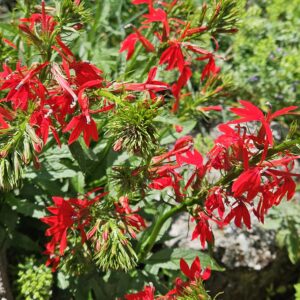

 This year a number of persons reported to me that when their neighbors started with mosquito and tick control pesticide applications, they no longer have bees or butterflies in their yards. Even if they have lots of bee and butterfly friendly flowers, or lots of clover - they now rarely or never see bees and butterflies. This has also been my experience.
This year a number of persons reported to me that when their neighbors started with mosquito and tick control pesticide applications, they no longer have bees or butterflies in their yards. Even if they have lots of bee and butterfly friendly flowers, or lots of clover - they now rarely or never see bees and butterflies. This has also been my experience.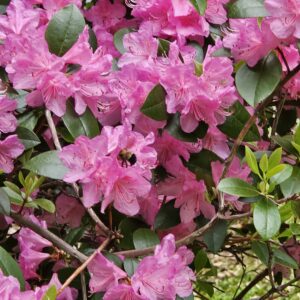 Bees are pollinators
Bees are pollinators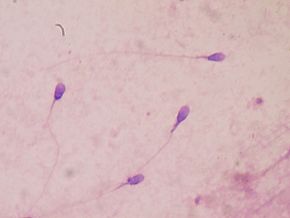
 Update to the toxic pesticide acephate story of
Update to the toxic pesticide acephate story of 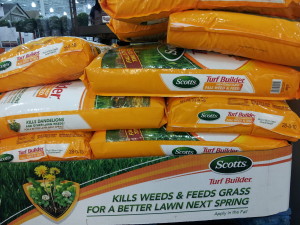 For a while now researchers have been finding that certain environmental chemical exposures are linked to the development of amyotrophic lateral sclerosis (ALS), which is commonly called Lou Gehrig's disease. Frequent exposure to pesticides and heavy metal and VOC exposure in solvents (e.g., in woodworking) are linked to ALS.
For a while now researchers have been finding that certain environmental chemical exposures are linked to the development of amyotrophic lateral sclerosis (ALS), which is commonly called Lou Gehrig's disease. Frequent exposure to pesticides and heavy metal and VOC exposure in solvents (e.g., in woodworking) are linked to ALS. People don't realize the incredibly large amounts of pesticides applied to crops and soil in the US each year.
People don't realize the incredibly large amounts of pesticides applied to crops and soil in the US each year.  People worry about breast cancer and whether exposure to chemicals "in the environment" can lead to breast cancer. According to many studies the answer is: YES, absolutely - and this is why they are called carcinogens (a substance capable of causing cancer). What are the chemicals?
People worry about breast cancer and whether exposure to chemicals "in the environment" can lead to breast cancer. According to many studies the answer is: YES, absolutely - and this is why they are called carcinogens (a substance capable of causing cancer). What are the chemicals? Also, avoid using pesticides as much as possible, and instead use least toxic Integrated Pest Management (IPM) or organic methods, both inside the home and outside.
Also, avoid using pesticides as much as possible, and instead use least toxic Integrated Pest Management (IPM) or organic methods, both inside the home and outside.